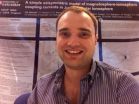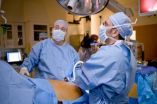(Press-News.org) Mama bear appears to know best when it comes to selecting a place to call home, according to a new University of Alberta study.
The study, published in the latest issue of PLOS ONE, explored whether the rearing of cubs by their mothers shaped which habitats grizzly bears eventually choose.
The findings "suggest that habitat selection is learned by young grizzly bears from their mothers, and would likely be a more adaptive strategy than using instinct," said lead author Scott Nielsen, assistant professor in the U of A Department of Renewable Resources.
The University of Alberta study is among the first of its kind to test the 'nature versus nurture' debate relative to how large, free-ranging wildlife select habitat, Nielsen noted.
The four-year research project, conducted in the foothills of west-central Alberta, Canada, tracked 32 adult and young grizzly bears that had been fitted with GPS radio collars. The animals' movements and habitats were monitored from 31,849 locations spanning 9,752 kilometres.
The researchers observed that genetically related female bears shared habitat selection strategies regardless of their location, while male bears related to one another did not.
"This suggests that there are different habitat selection strategies used by grizzly bears and that these are learned early in life, because male bears don't participate in parental care," Nielsen said.
The grizzly is considered a threatened species in Alberta (there are fewer than 700 in the province), and if their habitat-use strategies are indeed learned from early experiences, "then the habitats chosen for relocation of 'problem' bears or to supplement threatened populations would be important," Nielsen said.
###The research was funded by the Natural Sciences and Engineering Research Council of Canada, the Alberta Conservation Association and partners from the Foothills Research Institute Grizzly Bear Program.
For more information on the study contact:
Assistant Professor Scott Nielsen
Department of Renewable Resources
Faculty of Agricultural, Life and Environmental Sciences
University of Alberta, Edmonton, Canada
780-492-1656
scottn@ualberta.ca
Mama bear knows best, University of Alberta study shows
2013-01-22
ELSE PRESS RELEASES FROM THIS DATE:
New evidence indicates auroras occur outside our solar system
2013-01-22
University of Leicester planetary scientists have found new evidence suggesting auroras – similar to Earth's Aurora Borealis - occur on bodies outside our solar system.
Auroras occur on several planets within our solar system, and the brightest - on Jupiter – are 100 times brighter than those on Earth. However, no auroras have yet been observed beyond Neptune.
A new study led by University of Leicester lecturer Dr Jonathan Nichols has shown that processes strikingly similar to those which power Jupiter's auroras could be responsible for radio emissions detected from ...
Penn study sheds light on the complexity of gene therapy for congenital blindness
2013-01-22
PHILADELPHIA - Independent clinical trials, including one conducted at the Scheie Eye Institute at the Perelman School of Medicine, have reported safety and efficacy for Leber congenital amaurosis (LCA), a congenital form of blindness caused by mutations in a gene (RPE65) required for recycling vitamin A in the retina. Inherited retinal degenerative diseases were previously considered untreatable and incurable. There were early improvements in vision observed in the trials, but a key question about the long-term efficacy of gene therapy for curing the retinal degeneration ...
Study: Bariatric surgery in extremely obese adolescents
2013-01-22
This time of year many people make resolutions to live a healthier lifestyle, exercise more, lose weight and eat better. For the adolescents who are extremely obese in this country, diet and exercise alone often are not enough to get their weight down. Some of those teens will require weight loss surgery to improve their overall health. According to a recent study published in the January print issue of the Journal of Pediatric Surgery, bariatric surgery in extremely obese adolescents also was shown to be beneficial in helping to reverse previously undiagnosed cardiovascular ...
UBC research: Forget about fair – It's better when bosses pick favorites
2013-01-22
A new study from the University of British Columbia Sauder School of Business shows that bosses should pick favourites if they want top performing teams.
"Conventional wisdom tells us that we should treat everyone the same to create a collegial and productive work atmosphere," says Sauder Professor Karl Aquino, who co-authored the forthcoming study for the Journal of Business Ethics. "But our research shows this can be a disincentive for workers who would otherwise go above and beyond on behalf of the team with a little bit of extra attention."
In a series of experiments, ...
A relative from the Tianyuan Cave
2013-01-22
This press release is available in German.
An international team of researchers including Svante Pääbo and Qiaomei Fu of the Max Planck Institute for Evolutionary Anthropology in Leipzig, Germany, sequenced nuclear and mitochondrial DNA that had been extracted from the leg of an early modern human from Tianyuan Cave near Beijing, China. Analyses of this individual's DNA showed that the Tianyuan human shared a common origin with the ancestors of many present-day Asians and Native Americans. In addition, the researchers found that the proportion of Neanderthal and Denisovan-DNA ...
Enzyme replacement therapy shows promising results in X-linked myotubular myopathy
2013-01-22
A collaborative research team including a Medical College of Wisconsin (MCW) pediatric neuropathologist successfully mitigated some of the effects of a muscular disease by using a new targeted enzyme replacement therapy strategy from 4s3 Bioscience.
The findings are published in the January edition of Human and Molecular Genetics http://hmg.oxfordjournals.org/content/early/2013/01/09/hmg.ddt003.full.pdf+html.
X-linked myotubular myopathy (XLMTM) is a severe muscle disease caused by an absence of a protein called myotubularin. There is currently no treatment for this ...
New 2D material for next generation high-speed electronics
2013-01-22
Scientists at CSIRO and RMIT University have produced a new two-dimensional material that could revolutionise the electronics market, making "nano" more than just a marketing term.
The material – made up of layers of crystal known as molybdenum oxides – has unique properties that encourage the free flow of electrons at ultra-high speeds.
In a paper published in the January issue of materials science journal Advanced Materials, the researchers explain how they adapted a revolutionary material known as graphene to create a new conductive nano-material.
Graphene was ...
Study of how eye cells become damaged could help prevent blindness
2013-01-22
Light-sensing cells in the eye rely on their outer segment to convert light into neural signals that allow us to see. But because of its unique cylindrical shape, the outer segment is prone to breakage, which can cause blindness in humans. A study published by Cell Press on January 22nd in the Biophysical Journal provides new insight into the mechanical properties that cause the outer segment to snap under pressure. The new experimental and theoretical findings help to explain the origin of severe eye diseases and could lead to new ways of preventing blindness.
...
Controlling spine metastases with tumor 'separation surgery' and high-dose stereotactic radiosurgery
2013-01-22
Charlottesville, VA (January 22, 2013). Researchers from Memorial Sloan-Kettering Cancer Center (New York, NY) have found that tumor "separation surgery" followed by high-dose hypofractionated stereotactic radiosurgery (SRS) or high-dose single-fraction SRS is safe and effective in controlling spinal metastases regardless of the radiosensitivity of the particular tumor type that has invaded the spine. This finding is fleshed out in the article "Local disease control for spinal metastases following 'separation surgery' and adjuvant hypofractionated or high-dose single-fraction ...
Evidence mounts for role of mutated genes in development of schizophrenia
2013-01-22
Johns Hopkins researchers have identified a rare gene mutation in a single family with a high rate of schizophrenia, adding to evidence that abnormal genes play a role in the development of the disease.
The researchers, in a report published in the journal Molecular Psychiatry, say that family members with the mutation in the gene Neuronal PAS domain protein 3 (NPAS3) appear at high risk of developing schizophrenia or another debilitating mental illnesses.
Normally functioning NPAS3 regulates the development of healthy neurons, especially in a region of the brain known ...


